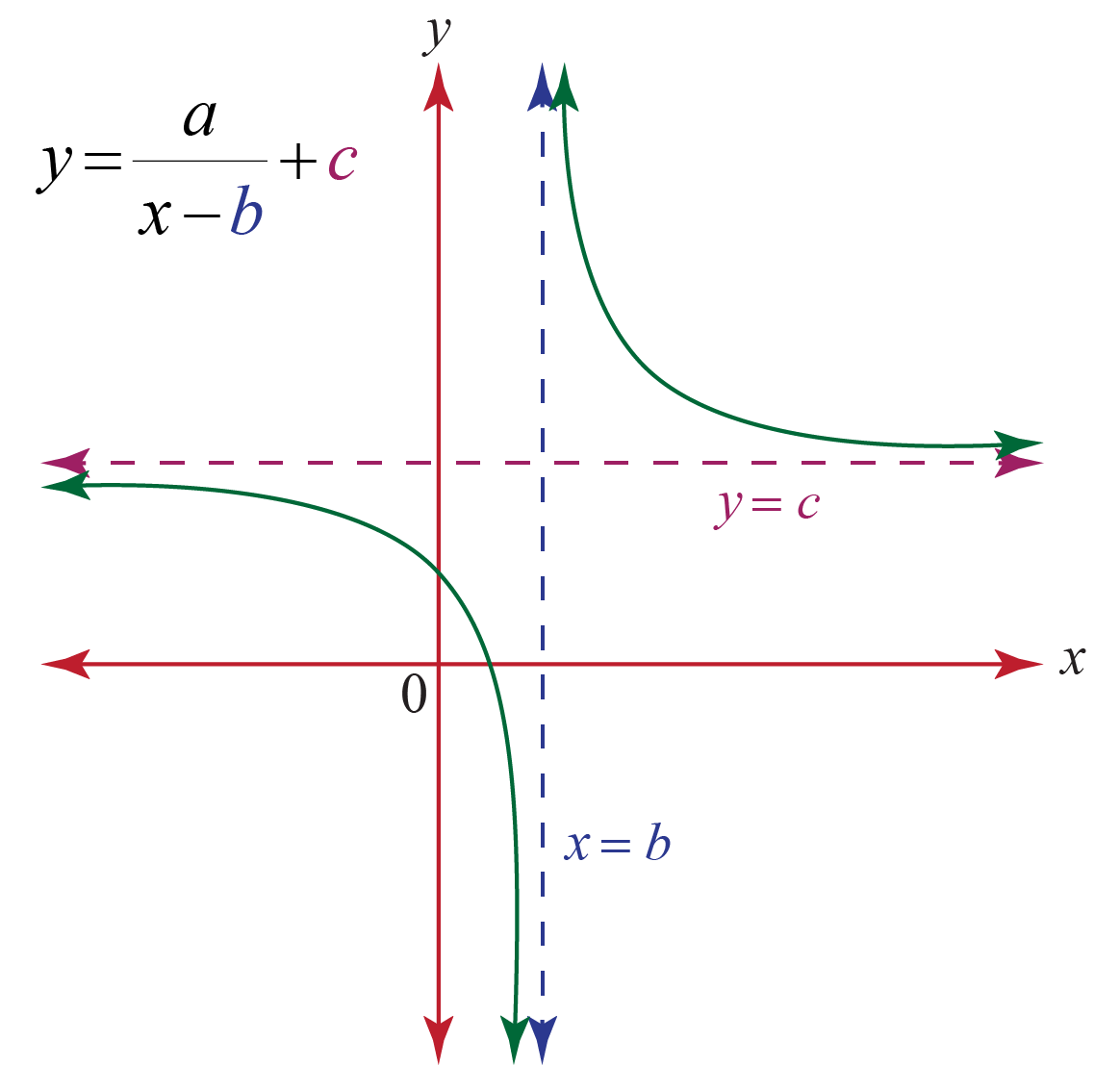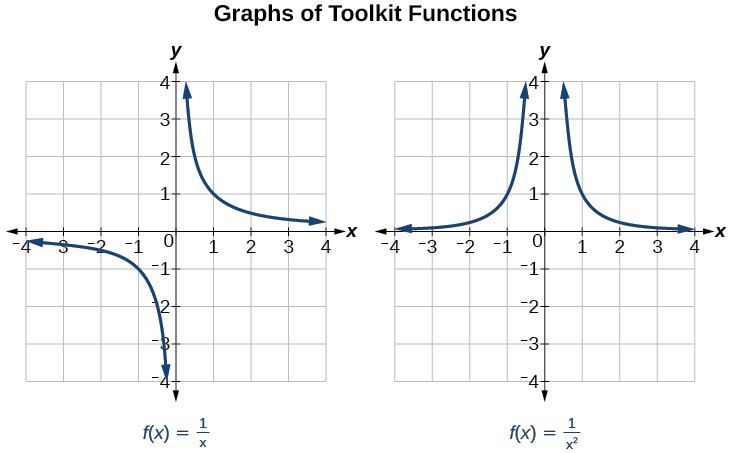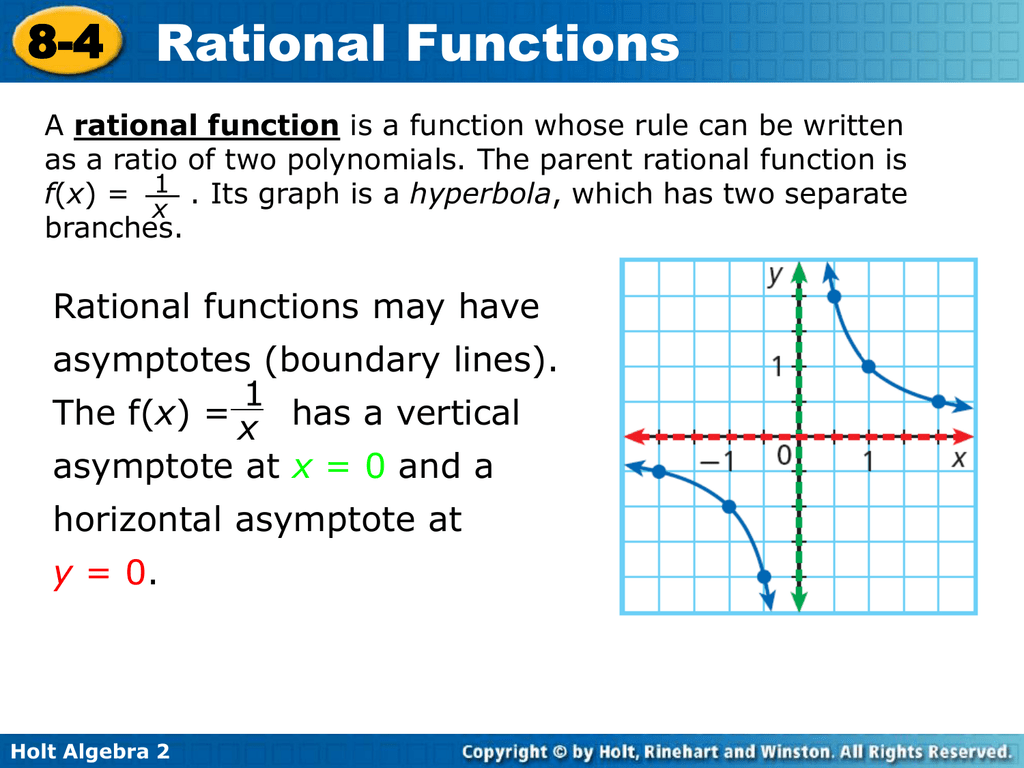

In the next example, we will identify a rational function from its graph. Hence, the correct graph of our function is choice c.

𝑥 - a x i s, which is not a part of the function transformation to obtain However, the graph in choice d is also reflected over the We can see that only choices cĪnd d meet these conditions. The horizontal asymptote 𝑦 = 0 of the parentįunction will not move as a result of this transformation. 𝑥 = 0 of the parent function to the new vertical asymptote When we shift the given graph to the left by 1 unit, it will move the vertical asymptote We need to shift the graph above to the left by 1 unit. Since we are applying the transformation 𝑥 → 𝑥 + 1 to obtain the graph of our function from the parent function, Recall that the transformation in the 𝑥-variable 𝑥 → 𝑥 + 𝑎 graphically represents a horizontal shift to the left by In particular, we note that this graph has horizontal asymptote 𝑦 = 0 and We note the 𝑦-values corresponding to 𝑥 = 1, 2, 3 on the The value of 𝑦 approaches negative infinity whenĪpproaches positive infinity when 𝑥 gets closer to zero from.𝑥 gets closer to zero from the negative direction andĪpproaches negative infinity when 𝑥 gets closer to zero from 𝑥 gets closer to zero from the negative direction or from The value of 𝑦 approaches positive infinity when.Finally, by interpreting the graph, what is happening to the function when the.Similarly, what is the end behavior of the graph as 𝑥 decreases?.The value of 𝑦 approaches negative infinity as.The value of 𝑦 approaches infinity as 𝑥.The value of 𝑦 approaches zero as the value of.

𝑥 increases along the positive 𝑥 - a x i s? 𝑥 into the function, what is the end behavior of the graph as
Rational function graph how to#
Since the graph has no x-intercepts between the vertical asymptotes, and the y-intercept is positive, we know the function must remain positive between the asymptotes, letting us fill in the middle portion of the graph.In this explainer, we will learn how to graph rational functions whose denominators are To sketch the graph, we might start by plotting the three intercepts. This means there are no removable discontinuities.įinally, the degree of denominator is larger than the degree of the numerator, telling us this graph has a horizontal asymptote at y=0. There are no common factors in the numerator and denominator. This occurs when x+1=0 and when x - 2=0, giving us vertical asymptotes at x=-1 and x=2. To find the vertical asymptotes, we determine when the denominator is equal to zero. We have a y-intercept at \left(0,3\right) and x-intercepts at \left(-2,0\right) and \left(3,0\right). At each, the behavior will be linear (multiplicity 1), with the graph passing through the intercept. Setting each factor equal to zero, we find x-intercepts at x=-2 and x=3. To find the x-intercepts, we determine when the numerator of the function is zero.


 0 kommentar(er)
0 kommentar(er)
